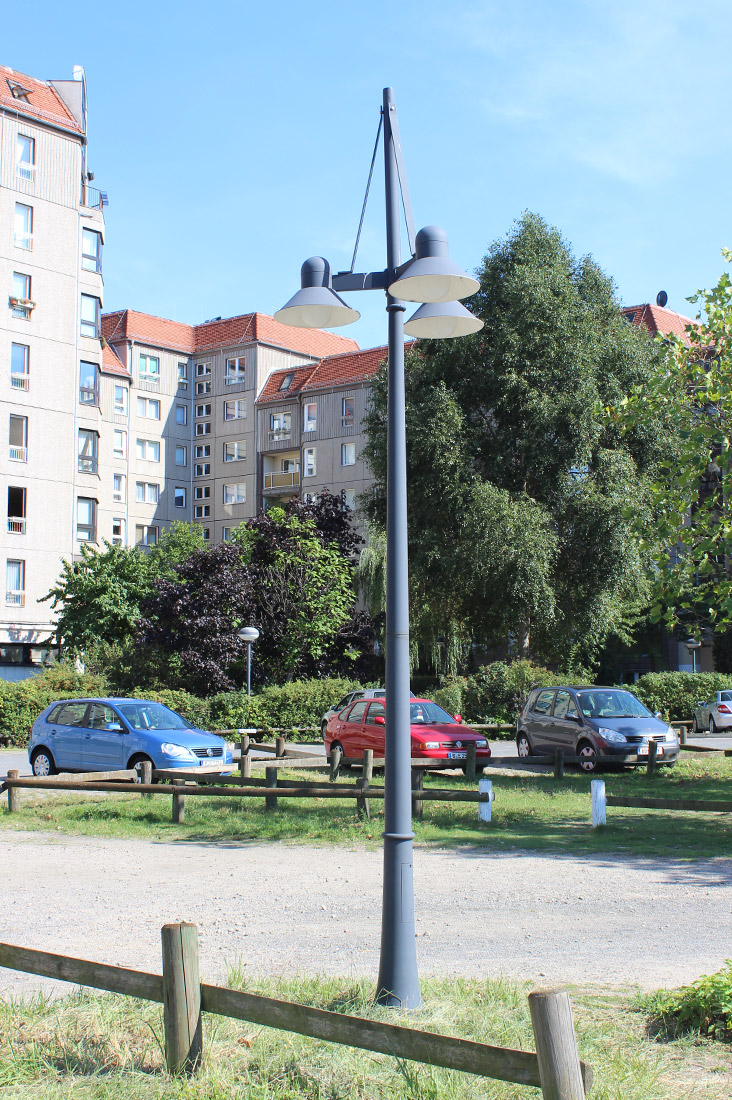West Berlin in August 2013
Berlin tastes as greasy as the famous German sausages. Everything here is fatty.
Fat metro sign.

Fat traffic light man named Ampelmann, one of the city’s symbols.

Fat lamppost resembling a bartender with two beer mugs.

Fat entertainment. Perhaps only in Berlin can you rent a beer tap — a car. Six people pedal while one steers.

Fat logos.


A huge, fattest trash bin at shoulder level.

Fat sculptures.

Fat pretzels.

Signposts are not fat, just a lot of them.

On the house, there is a drawing with an ornate street sign. It would seem to be someone’s imagination.

And here is the sign itself, adorned with even more accolades and embellished with fraktur script.

A typical street closer to the outskirts of the city.


Children’s playground.

Residential building.

Office building.

Despite the simplicity of panel buildings, up close they look quite nice thanks to balconies, each of which is either equipped with a seating area or simply filled with flowers.

Suddenly, an anemometer. Why measure wind at a height of three meters inside the closed box of houses?

Inner courtyard.


The spaces in the courtyard parking lots are numbered and have their owner.

The city center is dotted with pink and blue pipes. Berlin is built on a swamp (even the name of the city comes from the word “swamp”), and proper drainage is necessary for any construction here. Unfortunately, not everything can be buried underground, so improvisation is required. And Germans excel at improvisation: vibrant two-tone pipes have long become one of the unofficial symbols of the city, filling the urban landscape with character and gaining worldwide recognition.



This stone garden is a memorial to Jews who were killed. It is possible to walk between the stones, and the pathways follow a wave-like pattern with varying heights. It is also allowed to lie down and play tag on the monument.



New public toilet.

Upon inspection, it turns out to be no better than the blue booth.

An insanely large water pump.

Following Amsterdam, Berlin is one of the most bicycle-friendly cities in Europe. Here, an invisible battle for bike parking spaces unfolds. Something compels shops, banks, and cafes to create their own designated parking spots with obligatory advertising signs. The shapes of these parking spots vary greatly.






Parking meter and a broken payment kiosk.


The traffic light button is touch-sensitive. It is absolutely impossible to tell whether it has been pressed or not.


Various lanterns.




The park is nice.


But the sidewalk tiles spilled onto the roadway.

The Berlin subway is strictly utilitarian.






The subway cars are very cramped. It is barely possible to stand in two rows between the seats during rush hours.

The seats are covered with some crazy textures, and the windows are adorned with a bunch of stickers featuring the Brandenburg Gate. All this mishmash is so visually overwhelming that it becomes nauseating.

Disgusting teddy bear.

The Berlin Tower was commissioned by the Socialist Unity Party of Germany to demonstrate the superiority of socialism over other forms of governance. The construction was initiated by the leader of the German Democratic Republic (GDR), Walter Ulbricht, who also came up with the idea of the Berlin Wall.
An amusing and symbolic quirk happened with the tower: it turned out that on the round steel sphere at the top of the tower, the sun reflects in the shape of a cross. The residents of Berlin took advantage of this, associating the phenomenon with the atheism of the socialist regime. Since then, the tower has unofficially been referred to as the “Ulbricht’s Church.”

The tower allows anyone who is interested to enter, as long as they pay 10 euros and wait in line for two hours.
The tower offers a view of Berlin. The eastern part specifically.

And Westward:

The author hopes to dedicate more time next time to exploring the city because without comparing such distinct western and eastern parts, any narrative about it will be incomplete.

